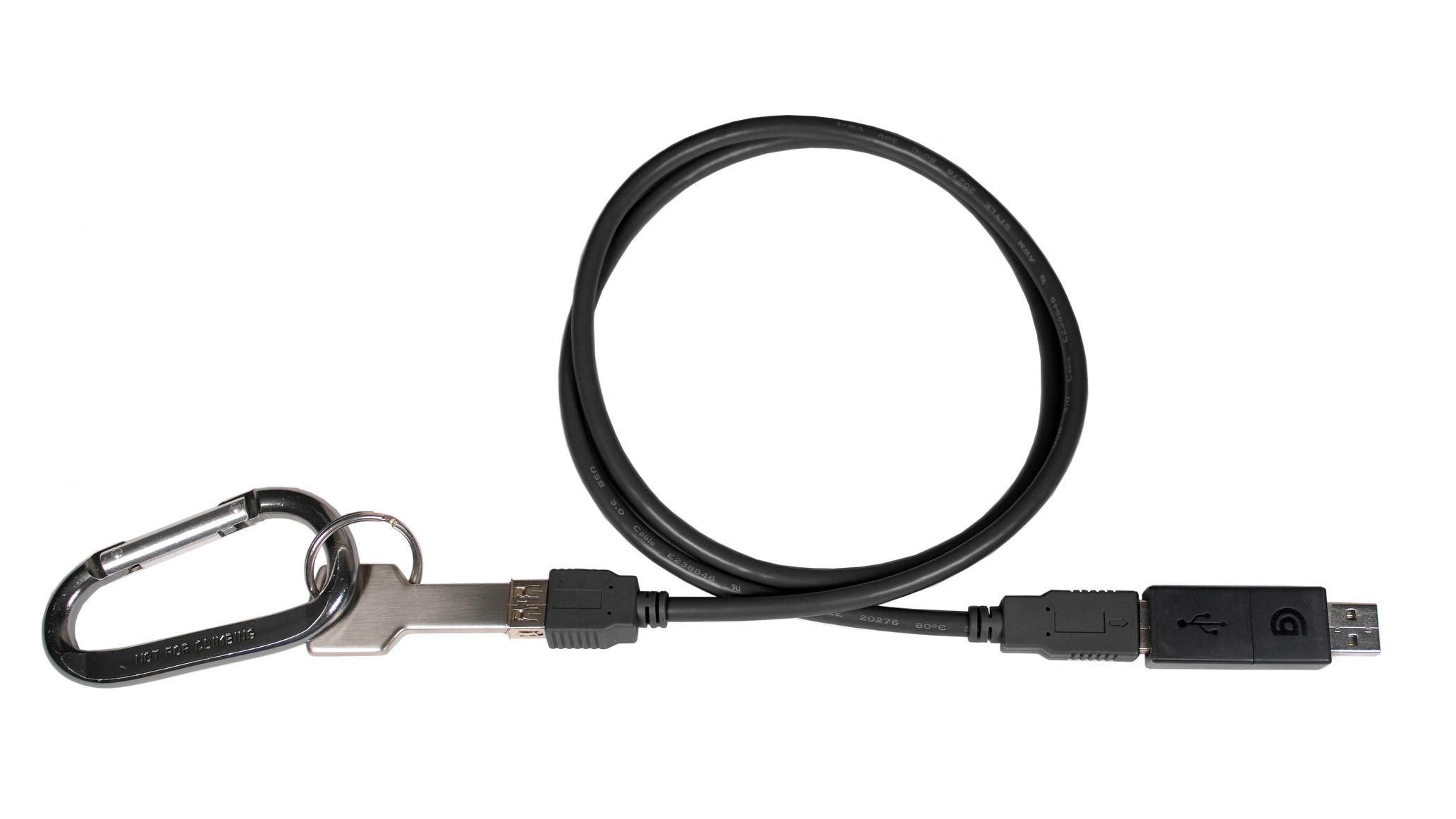@goldfishlaser please begin designing this in FreeCAD, add the freecad files to this repo, and update this ticket with your progress.
The first deliverable is a the 4x pieces with the voids cut-out for the both USB components on the outside of both the input/output sides only. Per our conversation, hopefully this can be met by Oct 11th.
When first creating the parts in FreeCAD, please make sure you're working in metric so that all measurements will be in metric.
I recommend starting with a solid block of plastic that's:
- 14mm wide (12mm USB standard plus 1mm plastic on either side)
- 6.5mm high (4.5mm USB standard plus 1mm plastic on either side)
- depth = (1.5x the depth of your female receptacle) + (2x the depth of your magnet depth), rounded-up to the nearest whole mm.
Then "carve" that block into our 4x pieces as described above. Two "cuts" should be made:
- A cut half-way along the height (so at 6.5/2 = 3.25mm height) that divides the top & bottom sections for both the input and output ends of the adapter (that will be bolted together later)
- An asymmetric cut in the depth such that input side (with the female USB receptacle) is larger than the male side (with the male USB plug)
These measurements are just suggestions and will likely need to be modified as the prototype is developed





 image of current file with midpieces (for stabalizing magnets and pins/receptors) in progress
image of current file with midpieces (for stabalizing magnets and pins/receptors) in progress

 The pieces fit pretty well:
The pieces fit pretty well:  USB fits pretty well:
USB fits pretty well:  Lid on top of midpiece:
Lid on top of midpiece:  - was hoping it would hold without glue, but glue will be needed.
- was hoping it would hold without glue, but glue will be needed.
 commit 73c38b8
commit 73c38b8





This issue will track the progress of making the shell for the magnetic breakaway adapter that can be 3D-printed for encasing the electronics that makeup the adapter.
This may change as the prototype progresses, but I'm imagining that the shell should: